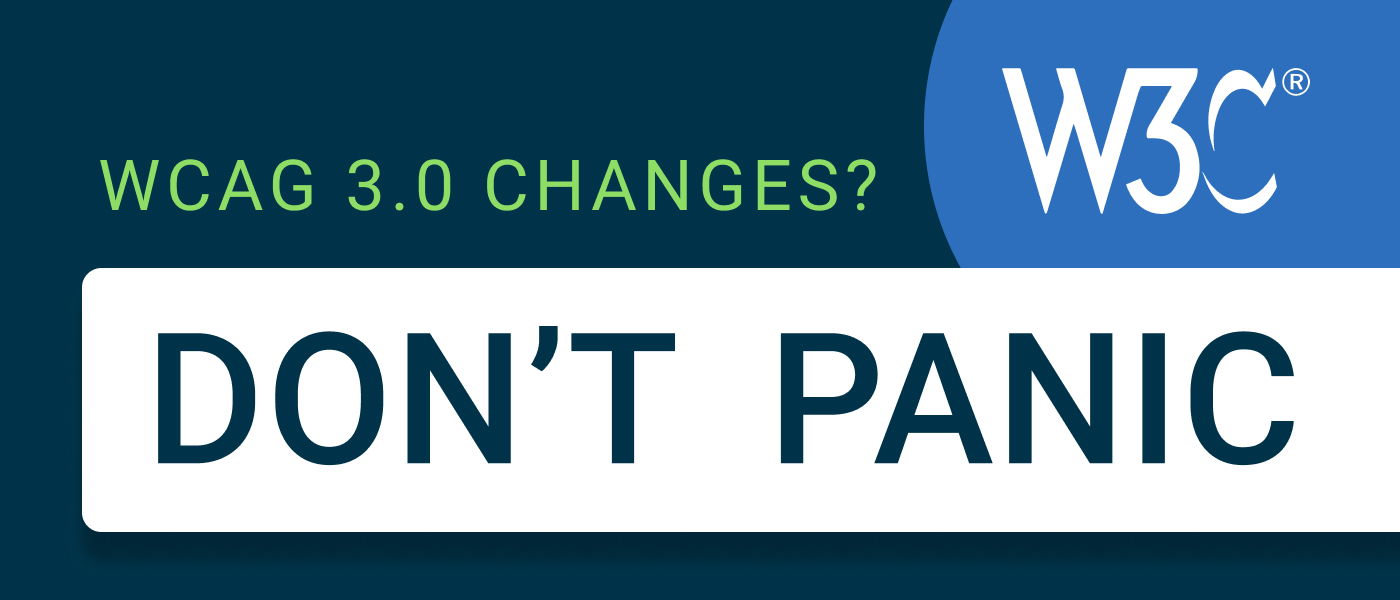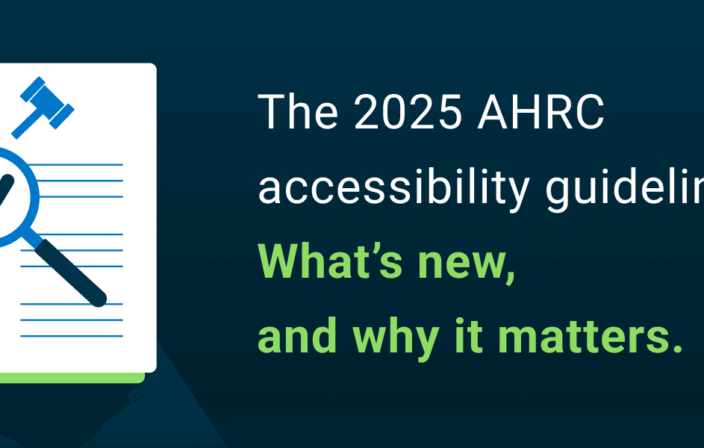Far out in the uncharted backwaters of the unfashionable end of the Western Spiral arm of the Galaxy lies an utterly insignificant little blue-green planet (that’s us). And this planet has a problem: most people who’ve tried to use the internet struggle to do so.
The folks at the W3C are trying to do something about this.
For Global Accessibility Awareness Day (GAAD) this year, the W3C is publishing its latest draft of WCAG 3.0, adding 174 new outcomes. And our message to you echoes one you may recall from The Hitchhiker’s Guide to the Galaxy (which I’ve just borrowed from above): Don’t panic.
Key differences
The most notable difference between the coming draft and its predecessor are those 174 new outcomes (WCAG 3.0’s new name for success criteria). These outcomes are expected to make up the main section for WCAG 3.0. For comparison, WCAG 2.1 has 78 success criteria, or 50 if you don’t count Level AAA.
That’s a lot of new outcomes, but before you start to feel too overwhelmed, here are a few important things to remember:
- These are very early draft versions.
- Many outcomes will likely be dropped.
- The conformance level has yet to be decided.
Goals for the new draft
This draft is effectively the W3C putting all its cards on the table and asking: “What did we miss?” There are outcomes that the W3C knows are important for people with disabilities but for which they don’t have enough research. There are also likely other needs that people with disabilities have that aren’t known to the W3C. So this draft asks for that research and for people to report those gaps.
At this stage, the outcomes are ideas of what a particular topic may include—without detailed definitions, lists of exceptions, and examples. Whether any given outcome ultimately makes it into the definitive version of WCAG 3.0 depends on many factors.
From WCAG 2, we know that outcomes that 1) are difficult to test consistently, 2) have too many edge cases, or 3) lack proper research tend to get weeded out in the writing process. Or, they get moved up to a higher level of conformance (Level AAA in WCAG 2, Gold in WCAG 3.0), which organizations are encouraged but not required to meet.
What’s in the new outcomes?
While a good number of these outcomes will be familiar to anyone working in digital accessibility, there are quite a few new ideas in the report to be aware of. Highlights include:
Non-verbal cues: Media alternatives explain nonverbal cues, such as tone of voice, facial expressions, body gestures, or music with emotional meaning.
The purpose of this outcome is to aid people with difficulty understanding non-verbal cues to understand the purpose of images, video, and other media. This benefits people, such as some on the autism spectrum, who have difficulty understanding social cues.
Single idea: Each segment of text [such as sentence, paragraph, bullet] presents one concept.
When a longer text covering multiple topics is broken up into smaller paragraphs, with each covering a different topic, comprehension of the text is improved. This is useful for everyone, but especially for people with short-term memory challenges. Properly segmented texts makes it easier to go back and reread the topic of interest without getting lost in other topics.
Disability information privacy: Disability information is not disclosed to or used by third parties and algorithms (including AI).
A person’s disability needs, preferences, and use of assistive technologies are extremely personal. It is up there with other medical information. This information can, and often is used to deny people education, housing, insurance, employment, and more. Many sites these days do use widgets, which prevent access of information to people unless they are willing to disclose their disability needs to the widget provider. This outcome aims to keep people safe from such practices.
When can we use this
There are a lot of great ideas included in the latest WCAG 3.0 draft. But there is an awful lot still to be worked out. W3C calls this the “exploratory” stage of WCAG 3.0 outcomes. As the work progresses, outcomes will be moved from exploratory, to developing, refining, and lastly, to mature.
We don’t advise using these new outcomes as requirements for a product just yet. However, if you’re ready for a new challenge they are worth considering as additional best practices. WCAG 2.0, 2.1, and 2.2 should remain the foundation of any web accessibility program for the foreseeable future.
The W3C currently does not have a timeline for when WCAG 3.0 will be released as a “recommendation” (the point at which the document is done). The current roadmap goes up to 2026, but even in the most optimistic scenario, WCAG 3.0 likely won’t be finished before 2028. Considering the progress so far—and comparing it to how much time it took for WCAG 2.0 to finish from the point where it had its first list of success criteria (7 years)—we may not see WCAG 3.0 before 2030.
Giving feedback
These working drafts are published by the W3C in order to show progress and gather public feedback. In the editor’s note, the following three questions are explicitly called out:
- What outcomes are needed to make web content accessible, and which are missing from this list?
- What research supports or refutes these outcomes?
- Are outcomes listed here out of the scope of accessibility guidance, and why?
If you are interested in providing feedback, you can do so by opening a GitHub issue or by sending an email to public-agwg-comments@w3.org (comment archive).




